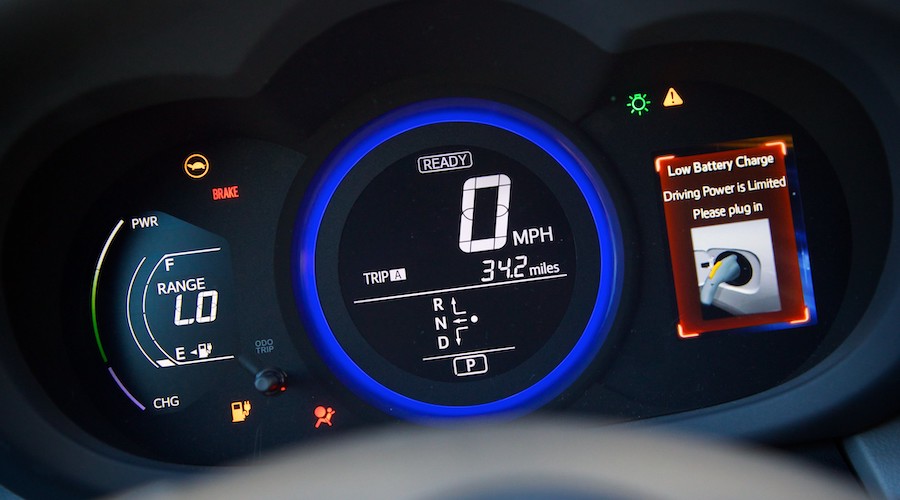Stanford researchers figure out how to reduce Li-metal battery degradation

Stanford University researchers have discovered that by draining and letting them rest for several hours, lithium metal batteries’ cycle life improves significantly.
At present, these devices rapidly lose their capacity to store energy after relatively few cycles of charging and discharging, which is impractical for drivers who expect rechargeable electric cars to operate for years.
To address this issue, scientists have been testing a variety of new materials and the Stanford straightforward approach, described in a study published in the journal Nature, restored battery capacity and boosted overall performance.
“We were looking for the easiest, cheapest, and fastest way to improve lithium metal cycling life,” study co-lead author Wenbo Zhang said in a media statement. “We discovered that by resting the battery in the discharged state, lost capacity can be recovered and cycle life increased. These improvements can be realized by reprogramming the battery management software, with no additional cost or changes needed for equipment, materials, or production flow.”
For Zhang and his colleagues, the results of the study could provide EV manufacturers with practical insights on adapting lithium metal technology to real-world driving conditions.
Lithium metal vs. lithium-ion technology
A conventional lithium-ion battery consists of two electrodes – a graphite anode and a lithium metal oxide cathode – separated by a liquid or solid electrolyte that shuttles lithium ions back and forth.
In a lithium metal battery, the graphite anode is replaced with electroplated lithium metal, which enables it to store twice the energy of a lithium-ion battery in the same amount of space. The lithium metal anode also weighs less than the graphite anode, which is important for EVs. Lithium metal batteries can hold at least a third more energy per pound than lithium-ion.
“A car equipped with a lithium metal battery would have twice the range of a lithium-ion vehicle of equal size – 600 miles per charge versus 300 miles, for example,” co-lead author Philaphon Sayavong said. “In EVs, the goal is to keep the battery as lightweight as possible while extending the vehicle range.”
Doubling the range could eliminate range anxiety for drivers who are reluctant to purchase EVs. Unfortunately, continuous charging and discharging causes lithium metal batteries to degrade quickly, rendering them useless for routine driving. When the battery is discharged, micron-sized bits of lithium metal become isolated and get trapped in the solid electrolyte interphase (SEI), a spongy matrix that forms where the anode and electrolyte meet.
“The SEI matrix is essentially decomposed electrolyte,” Zhang explained. “It surrounds isolated pieces of lithium metal stripped from the anode and prevents them from participating in any electrochemical reactions. For that reason, we consider isolated lithium dead.”
Repeated charging and discharging result in the build-up of additional dead lithium, causing the battery to rapidly lose capacity.
“An EV with a state-of-the-art lithium metal battery would lose range at a much faster rate than an EV powered by a lithium-ion battery,” Zhang said.
Discharge and rest
In previous work, Sayavong and his colleagues discovered that the SEI matrix begins to dissolve when the battery is idle. Based on that finding, the Stanford team decided to see what would happen if the battery was allowed to rest while discharged.
“The first step was to completely discharge the battery so there is zero current running through it,” Zhang said. “Discharging strips all the metallic lithium from the anode, so all you’re left with are inactive pieces of isolated lithium surrounded by the SEI matrix.”
The next step was to let the battery sit idle.
“We found that if the battery rests in the discharged state for just one hour, some of the SEI matrix surrounding the dead lithium dissolves away,” Sayavong said. “So when you recharge the battery, the dead lithium will reconnect with the anode, because there’s less solid mass getting in the way.”
Reconnecting with the anode brings dead lithium back to life, enabling the battery to generate more energy and extend its cycle life.
“Previously, we thought that this energy loss was irreversible,” Yi Cui, senior author of the paper, said. “But our study showed that we can recover lost capacity simply by resting the discharged battery.”
Using time-lapse video microscopy, the researchers visually confirmed the disintegration of residual SEI and subsequent recovery of dead lithium during the resting phase.
More News
{{ commodity.name }}
{{ post.title }}
{{ post.date }}



Comments